The women who blew up Berlin.
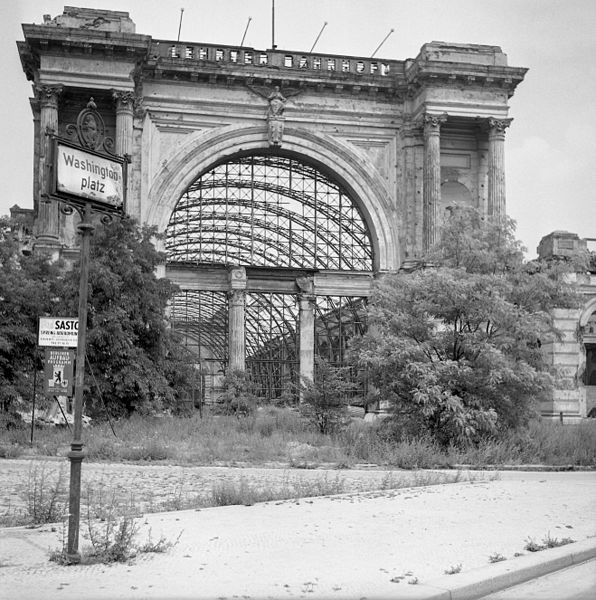
Walk down any Berlin main street and you will be struck by its discordant architecture.
Today’s new 21st century glass and steel cages, still retaining the same mass as the rare surrounding surviving pre-war blocks, now fill the old vacant spaces left by WWII and the rare stone, bullet scarred facades of pre-1945 Berlin.
In between comes the bulk of ’50s and ’60s concrete boxes, the face of the Berlin’s great (and still ongoing) post-war relaunch. These were erected fast and cheaply, once the bombing rubble had been cleared away, to house tomorrows world. Symbolically, this fresh, modern style was chosen to represent a future in what was then the most important city in Europe.
These post-war buildings would become the faces of two choices of future, one in east Berlin and one in the west – a future under either communism or democracy.
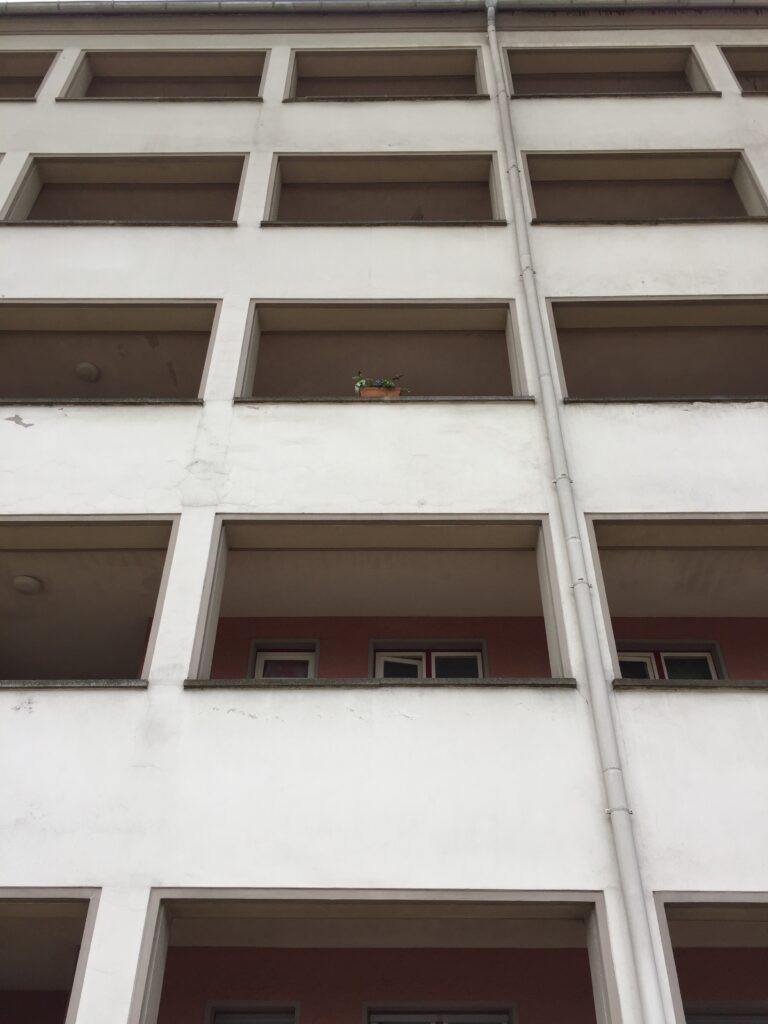
Students of architecture would have sensed a continuity in this post-war city-wide style. It retained elements of the earlier architectural projects that fell under the broad label ‘Modernism’.
This early 20th century architecture was characterised by a shedding of historic styles, as a rapidly changing 19th century Germany industrialised, mechanised, urbanised and democratised. This new world demanded a New Berlin. Old Germany disintegrated, perishing as horse drawn Imperial carriages were replaced by electric mass public transport vehicles processing through Potsdamer Platz and the Brandenburg Gate. This transition was so profound its fall-out dictated world history for the following century.
After WWII, the famed ‘Rubble Women’ cleared broken Berlin by hand, creating the ‘rubble mountains’ on both sides of the city. But one women was a different type of rubble women. She didn’t remove it. She created it. Her name was Hertha Bahr. And she blew up bits of Berlin.
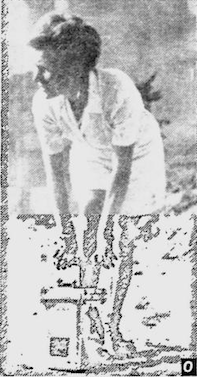
There are very few images of Frau Bahr. She appears in broadcast of TV news in mid-July 1957. Berlin was still in ruins, and there amongst them is Hertha, surrounded by gangs of grinning men overalls. She is definately in charge. And she is laying charges as the footage cuts to here inserting dynamite into bore holes. Minutes later, the vast, ruined temple of industry, Lehrter Bahnhof (now Berlin Main Station), crashes to the ground.
Hertha Bahr was Germany’s first female demolition expert. Her company base was a renovated villa in the wealthy Grunewald district. Here she organised her operations. In the late 1940’s an eye witness account mentions her company involved in the demolition of buildings surrounding the famous Baroque Gendarmenmarkt Square in central Berlin.
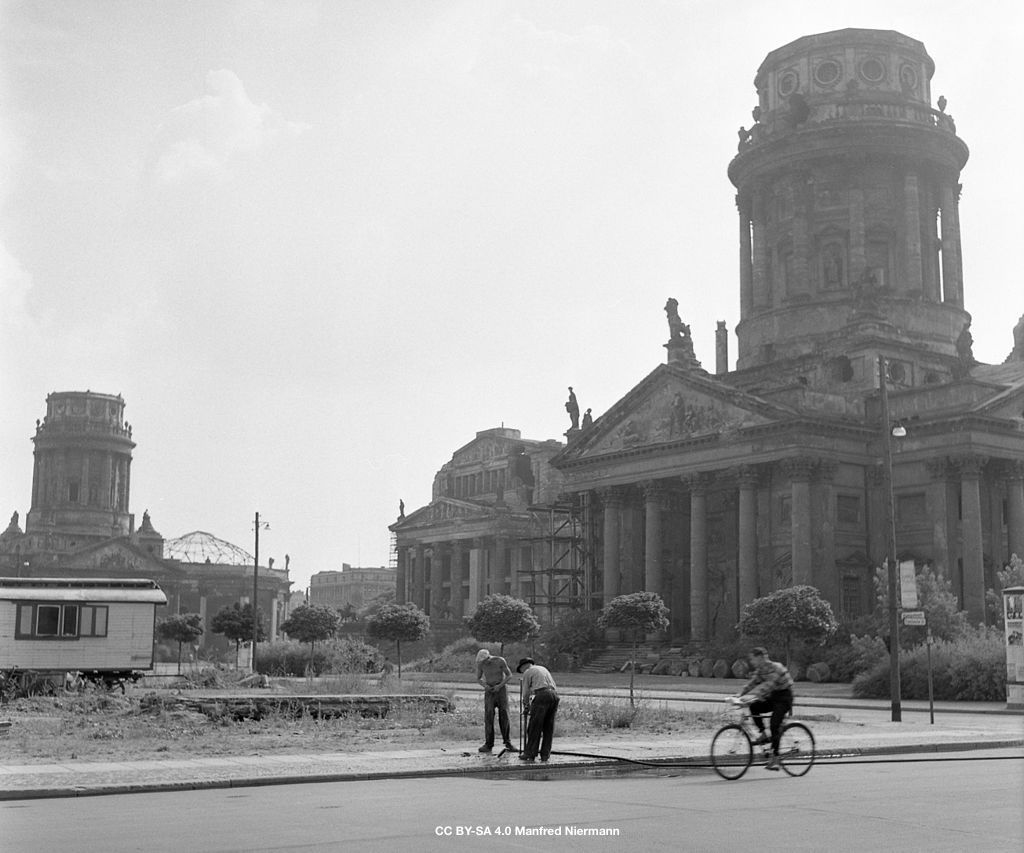
All reports on Behr’s activities (admittedly a novelty), often seem obsessed with her appearance. This time it’s noted, she was sporting a ‘green silk blouse and red nail polish’. While she was at work here, folks were squatting in the rubble and cellars and refused to leave. One was nearly crushed by a falling wall.
Bahr’s first major commission was to destroy the building at the very heart of Hitler’s Berlin – the New Reich Chancellery from 1939. This project was a central part of the ‘denazifaction’ policy introduced by the victors in the late 1940s. Part of this ‘deprogramming’ was to remove Nazi period buildings to avoid them, in defeat, becoming places of sentimental memory of the Nazi regime. This was deemed necessary, its reported that tearful crowds gathered and sung outside the Chacellery in the immediate post war years. Even the wall plaster of Hitler’s mountain house was removed by locals as ‘the Führers breath had condensed in it’).
Though Hitler spent more time making key decisions and directing WWII from 2 other places than the Berlin Reich Chancellery (these were the ‘Wolfs Lair’ in Eastern Poland today and his ‘home’ – the Berghof – in Berchtesgaden – roughly 1000 days spent in each place) this building symbolised the core of his regime in the Nazi capital. Here was his office, and in the garden of the building his body would burn in 1945.
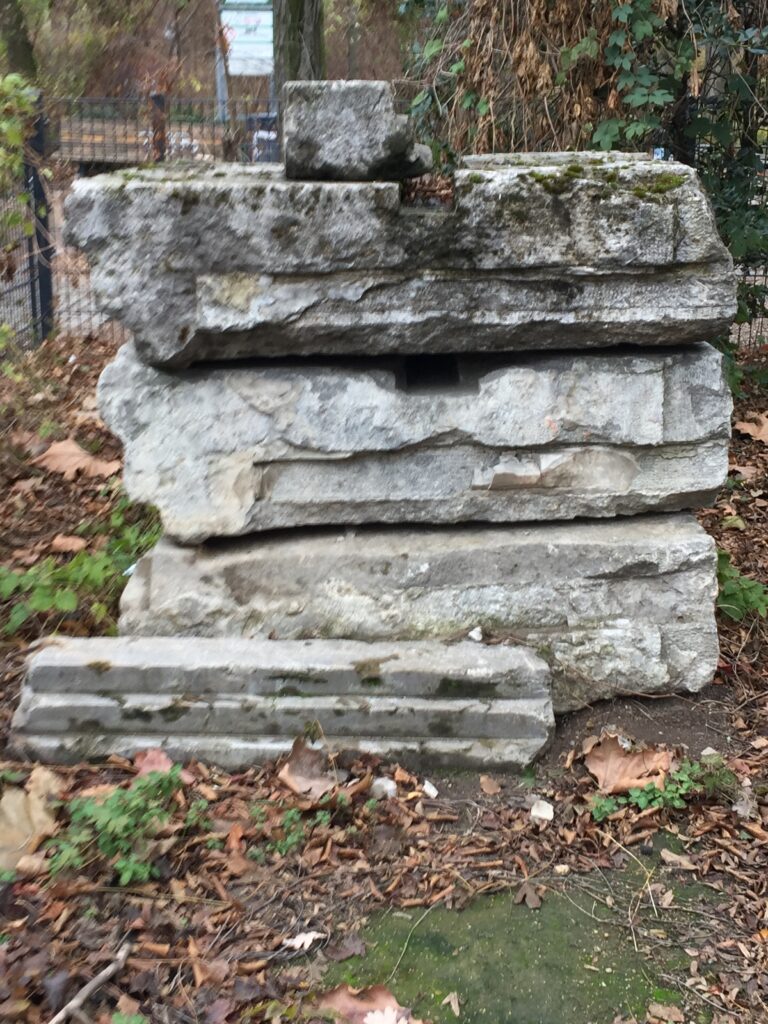
History does not record what she was wearing during this operation, (but it seems to have been a dark, roughish coat and black skirt).
In the late 1950s she destroyed Lehrter Station, and in the summer of 1960 the remains of Anhalter Station, leaving the entrance façade as a reminder of the ruins of war, perhaps a response to growing resistance amongst west Berliners that reminders of old west Berlin were practically all gone.
She was still working in west Berlin the 1970s, removing the ruins of domestic buildings for redevelopment, appearing in action depressing the plunger of a detonator in an article in the Carlisle Citizen newspaper based in Iowa. A white summer dress was apparently the choice here.
They quote her: ‘Blowing up a building is a safe as crossing the road, as long as you know what you are doing’.
